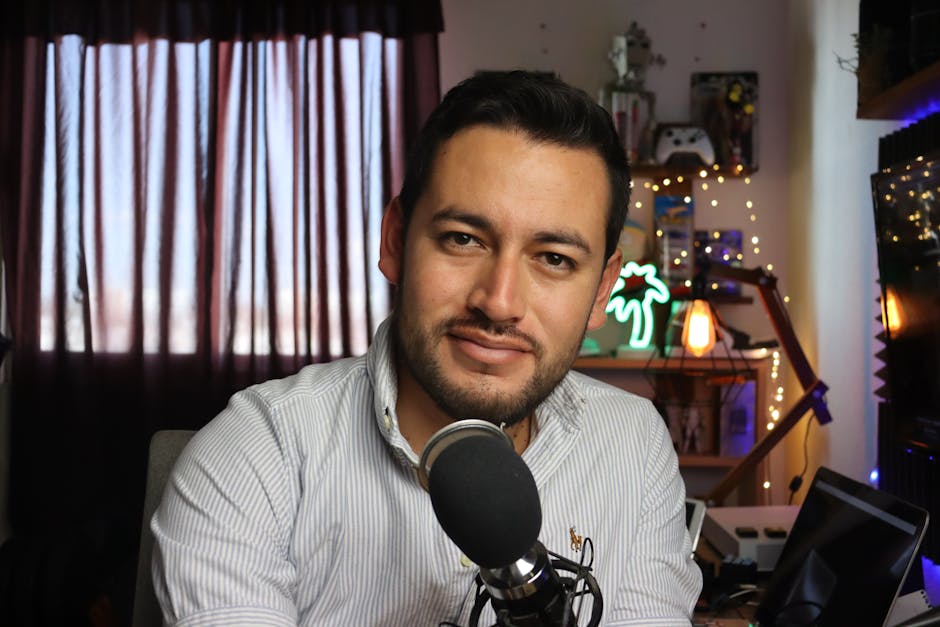My Experience with Repurposing Podcast Content for Blog Posts.
My Experience with Repurposing Podcast Content for Blog Posts
For years, my podcast was a labor of love, a weekly deep dive into topics I was passionate about. I poured hours into research, recording, and editing, building a loyal audience who tuned in every episode. Yet, I couldn’t shake the feeling that my valuable insights were trapped in audio files, reaching only a fraction of their potential audience. The idea of turning those spoken words into written blog posts always lingered, a promising but daunting prospect. What started as a tentative experiment has now become a cornerstone of my content strategy, and I’m excited to share the journey, the triumphs, and the unexpected challenges I encountered along the way.
My Initial Leap: From Spoken Word to Searchable Text
The decision to start repurposing wasn’t a sudden epiphany; it was a gradual realization fueled by a desire for broader reach and better SEO. I knew that while podcasts are fantastic for engaging listeners, they aren’t inherently searchable in the same way text is. My audio content, rich with keywords and expert opinions, was largely invisible to search engines. That felt like a missed opportunity. My first step was to select a handful of my most popular podcast episodes, those with evergreen content and strong listener engagement, as my pilot projects.
I began by getting high-quality transcripts. Initially, I tried automated services, which were fast but often riddled with errors, especially with technical terms or specific names mentioned in my episodes. This meant significant time spent on manual corrections, which almost negated the time-saving benefit. I quickly learned that investing in a more accurate transcription service, or even occasionally a human transcriber for particularly nuanced episodes, was a worthwhile expense. The goal wasn’t just text, but *clean, accurate* text that could serve as a solid foundation.
Once I had the transcripts, the real work began. It wasn’t just a copy-paste job. Spoken language is fluid, conversational, and often contains redundancies or tangents that don’t translate well to written form. My initial attempts felt clunky, like reading a verbatim court transcript rather than an engaging blog post. I realized I needed to transform the content, not just transcribe it. This meant restructuring sentences, clarifying points, removing filler words, and adding proper paragraph breaks and headings. It was a learning curve, moving from the rhythm of speech to the structure of an article, but I was determined to crack the code.
Unveiling the Practical Hurdles: What I Learned About Transforming Audio
While the concept of repurposing sounds straightforward, my experience quickly revealed a few significant hurdles. The first, as mentioned, was the sheer difference between spoken and written communication. A great podcast host might repeat a point for emphasis, use colloquialisms, or jump between ideas in a way that flows perfectly in audio but confuses a reader. My early blog posts from repurposed content often lacked the clear, logical flow that readers expect. I had to develop an editor’s eye, specifically for converting conversational speech into concise, scannable text.
Another challenge was maintaining my “voice.” My podcast had a distinct personality, and I wanted that to carry over into the blog. Simply editing for grammar and clarity sometimes stripped away the very essence of what made my podcast unique. I learned to edit with a light touch, preserving my conversational tone while still making the content professional and engaging for a reading audience. This often involved reading the edited piece aloud to ensure it still sounded like me, just in a different medium.

Finally, there was the issue of visual appeal and supplementary content. A podcast relies solely on audio; a blog post thrives on visuals, internal and external links, and clear calls to action. My initial repurposed posts were text-heavy and lacked these crucial elements. I quickly realized that to make these blog posts truly stand out and perform well on search engines, I needed to integrate relevant images, embed the original podcast episode, and add links to related articles on my site or to authoritative external resources. This added another layer to the repurposing process, turning a simple transcription into a full-fledged content creation task.
Forging a Workflow That Actually Delivered Results for My Content
After those initial stumbles, I knew I needed a systematic approach. My ad-hoc efforts were too time-consuming and inconsistent. I developed a step-by-step workflow that has since become incredibly efficient. It starts immediately after a podcast episode is recorded and edited.
- High-Quality Transcription: I now use a combination of AI transcription services for the first pass, followed by a dedicated proofreader (sometimes myself, sometimes a freelancer) to ensure accuracy. This saves significant time compared to purely manual correction.
- Initial Content Block Selection: Instead of trying to use everything, I identify the core segments, key arguments, and most valuable insights from the transcript. Not every word needs to make it into the blog post.
- Structuring for Readability: I outline the blog post using headings and subheadings (H2, H3) before writing. This forces a logical flow that spoken conversation often lacks. Each H2 typically covers a main point discussed in the podcast.
- Drafting and Editing for Clarity: I then take the selected transcript segments and rewrite them for written clarity, conciseness, and impact. I remove filler words, streamline sentences, and ensure smooth transitions. This is where the magic happens – transforming speech into engaging prose.
- SEO Optimization: This is critical. I conduct keyword research relevant to the podcast episode’s topic and strategically weave these keywords into the headings, body text, and meta description. I also optimize for Google’s E-E-A-T guidelines by ensuring expertise, experience, authority, and trustworthiness are evident in the content.
- Adding Value & Multimedia: I embed the original podcast episode at the top or bottom of the post. I add relevant images, charts, or infographics. Internal links to other blog posts on my site (e.g., Boost Your Content Strategy) and external links to reputable sources (like podcast statistics or content marketing trends) are integrated naturally.
- Crafting a Compelling Call to Action (CTA): Every blog post ends with a clear CTA – subscribe to the podcast, join my email list, share the post, or leave a comment.
This structured approach not only made the process more manageable but also significantly improved the quality and effectiveness of the resulting blog posts.
The Tangible Rewards: How Repurposing Amplified My Content Reach
The effort I poured into refining my repurposing process has paid off in ways I initially underestimated. The most immediate and noticeable benefit was a significant increase in organic search traffic to my website. Suddenly, all those valuable insights from my podcast, previously locked in audio, were discoverable by people searching on Google. Blog posts that directly addressed specific questions or problems discussed in an episode began ranking for relevant keywords, bringing new visitors to my site who might never have found my podcast otherwise.
Beyond direct traffic, I observed a boost in audience engagement. Readers who found my blog posts often clicked through to listen to the full podcast episode, increasing my download numbers. Conversely, loyal podcast listeners appreciated having a written version they could refer back to, share more easily, or skim for specific points. This created a powerful feedback loop, strengthening my overall content ecosystem. It also diversified my audience, attracting those who prefer reading over listening, or who consume content in different contexts (e.g., reading at work vs. listening during a commute).
Furthermore, repurposing significantly extended the lifespan of my content. A podcast episode might have a peak listening period, but a well-optimized blog post can continue to drive traffic and provide value for months or even years. This evergreen content strategy became a powerful asset, continually working for me long after the initial creation. It also provided a rich library of content for social media promotion, email newsletters, and even future e-books or courses, solidifying my authority in my niche.
Refining My Strategy: Evolving Beyond Basic Transcription
My journey didn’t stop once I had a working system. I continuously refined my strategy, always looking for ways to make the repurposed content even more impactful. One key evolution was moving beyond just “transcribing and editing” to truly “reimagining” the content for a new medium. This meant sometimes taking a single segment from an hour-long podcast and expanding it into its own dedicated blog post, rather than trying to cram the entire episode’s content into one article.
I also started to think




Post Comment